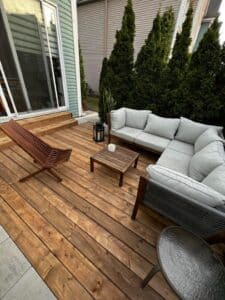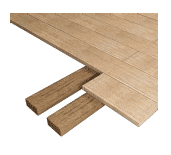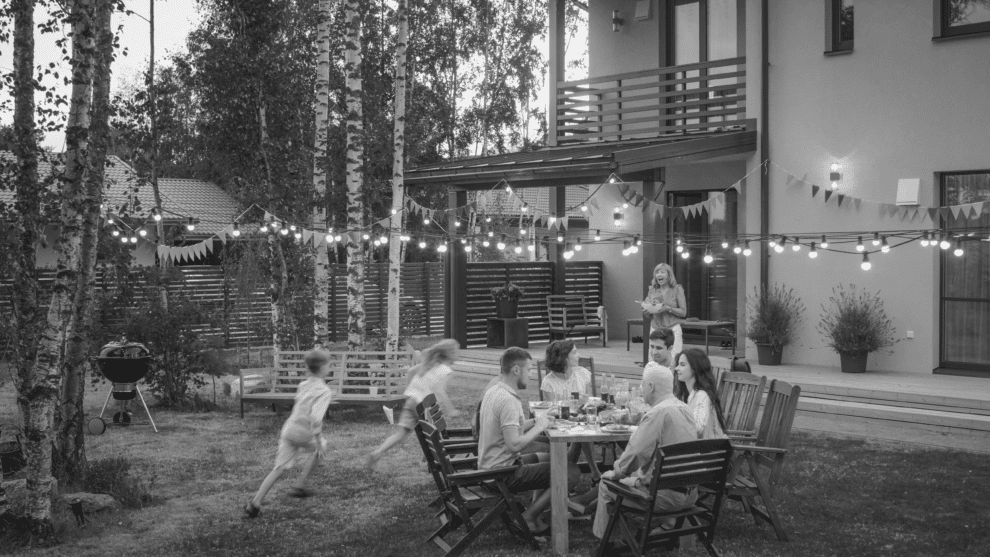How can I make my wooden deck more stable and durable?
Introduction
When it comes to building a deck on adjustable pedestals, the choice of support system is essential to guarantee stability and durability. Joists, made of solid wooden beams, are the key to a solid base for your decking. In this article, we’ll take you step-by-step through the process of creating a double joist, an effective and reliable method for creating a weather-resistant and pleasant deck. Follow our professional advice to successfully complete this crucial stage of your project.
1. The joisting

-
Understand the importance of joisting
Before embarking on the construction of your deck, it’s essential to understand the crucial role of joists.
Joists provide structural support for the deck decking and also allow adequate ventilation underneath, preserving the wood from damage caused by damp and mildew. Whatever the location of your wood deck, your joists should never be placed on the ground.
-
What is double joisting?
Classically, a wood deck is made up of deck boards fixed to a structure (made up of joists).
Double-structuring consists of installing two “layers” of joists: a first bed of joists, then a second bed of joists on top at 90°, followed by the deck boards.
In this way, you create a truly robust, rigid and durable floor.
Opting for double joists offers greater stability and reduces the risk of deformation of the decking, ensuring a solid, long-lasting terrace.
The most delicate and essential part of ensuring the stability and durability of a wooden structure, whether for a framework, a deck or any other construction, is the creation of the framework. The installation of deck boards, while involving certain difficulties and rules to be followed, is in no way comparable to this primordial stage.
If you’re planning to build a deck, opting for a double-structure installation is the best way to build your joists more easily, more quickly, with less risk of error and greater rigidity. However, this method is not suitable for all projects, as it requires a greater height than a single structure, and also a slightly higher quantity of materials.

-
Advantages of double joists
Opt for the double structure and benefit from numerous advantages for your wooden deck on blocks:
- fast, reliable wedging and levelling,
- resistance to movement of joists and deck boards,
- guaranteed against warping or sagging,
- less need for concrete blocks or foundation screws,
- creation of a solid floor for a more rigid, longer-lasting deck,
- improved ventilation for longer life.
2. Choice of joist material
The choice of joist material is crucial to the longevity of your deck.
- Wooden joists are the most common, offering a warm, natural look. Wood species such as pine, oak or exotic woods like ipe are popular for their weather resistance. Be sure to choose autoclave-treated joists for better protection against insects and humidity.
- You can also use aluminum joists, which are generally lightweight, easy to handle and cut, and more resistant to moisture.
3. Planning and tracing
Before you start installing the joists, take the time to carefully plan their location. Make sure you comply with local building regulations and check that they conform to your layout plan. Use stringers and levels to mark the location of each joist, ensuring that the lines drawn are perfectly straight and level.
4. Joists spacing
The spacing between joists depends on the type of decking you wish to use. In general, a spacing of 40 to 50 cm between each joist is recommended. Please consult your decking manufacturer’s recommendations for optimum spacing. Double joisting requires two parallel rows of joists, equally spaced.
5. Fixing joists to adjustable feet
Adjustable pedestals are the solid foundation of your raised terrace. Place them on the ground, making sure they are aligned correctly according to your markings. Then place your joists on the pedestals, making sure they are perfectly straight and parallel to each other. Use shims to adjust the level if necessary. You can add our bituminous band accessory to avoid problems of stagnant humidity, simply by gluing it to the top of the joist before fixing. Once the joists are correctly positioned, fasten them to the blocks using special joist screws. Finally, install the deck boards and secure them with screws.
6. Finishing and maintenance
Once your double joists and deck boards are in place, be sure to check the overall level of the structure.
Conclusion
Double joisting your deck on adjustable pedestals is a crucial step in ensuring a solid, long-lasting base. By choosing quality joists, carefully planning their location and using suitable adjustable pedestals, you can be sure of enjoying a hard-wearing, aesthetically pleasing terrace for many years to come. Don’t hesitate to call on the services of professionals to advise and support you, if necessary. With the right methods and materials, you’ll be able to enjoy your outdoor space with complete peace of mind.

